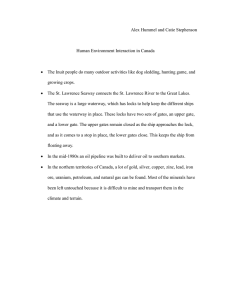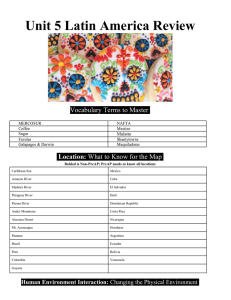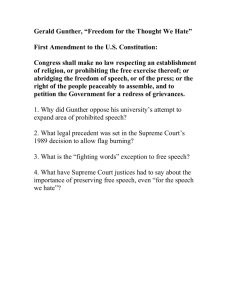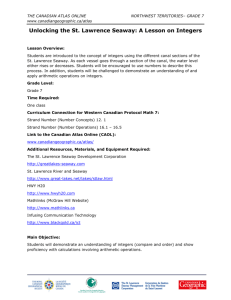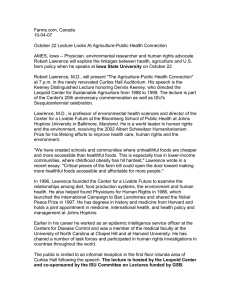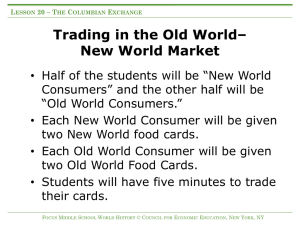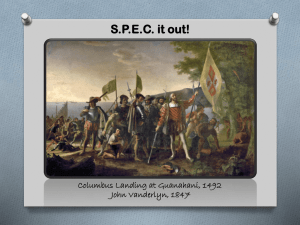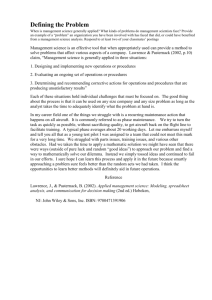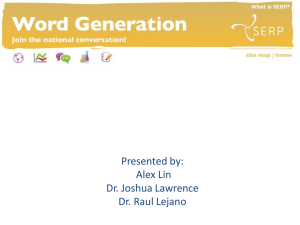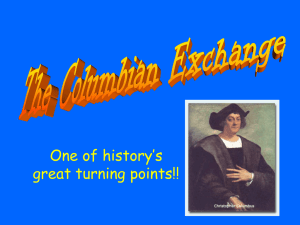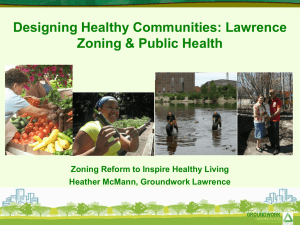Unit 4 Review
advertisement
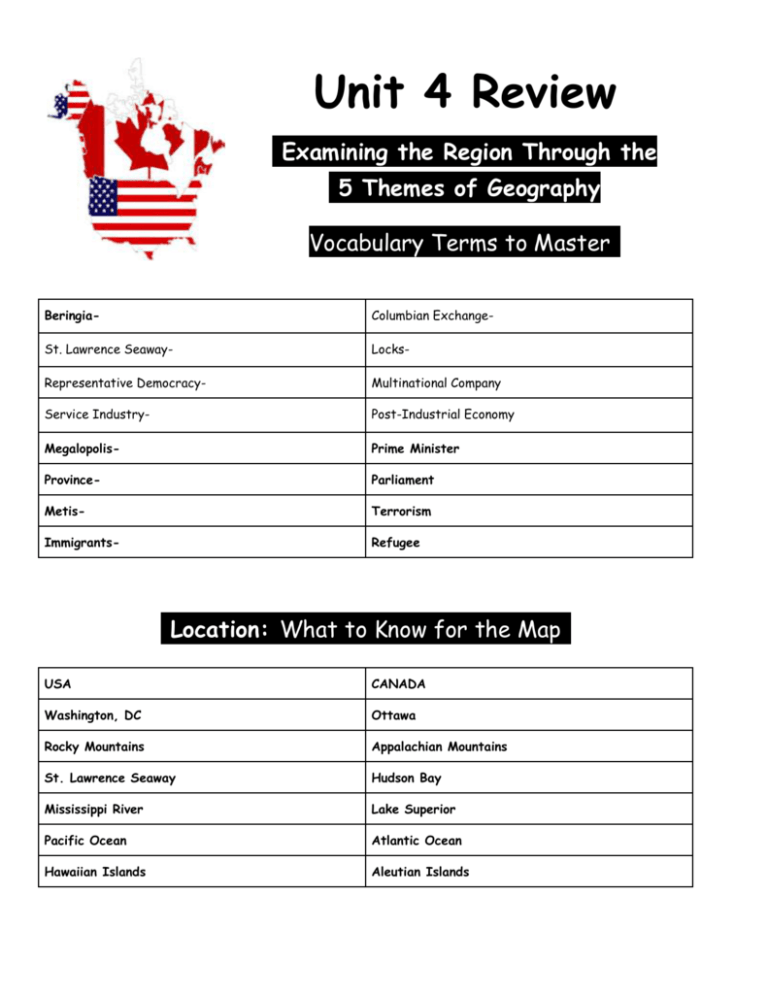
Unit 4 Review Examining the Region Through the 5 Themes of Geography Vocabulary Terms to Master. Beringia- Columbian Exchange- St. Lawrence Seaway- Locks- Representative Democracy- Multinational Company Service Industry- Post-Industrial Economy Megalopolis- Prime Minister Province- Parliament Metis- Terrorism Immigrants- Refugee Location: What to Know for the Map. USA CANADA Washington, DC Ottawa Rocky Mountains Appalachian Mountains St. Lawrence Seaway Hudson Bay Mississippi River Lake Superior Pacific Ocean Atlantic Ocean Hawaiian Islands Aleutian Islands Human Environment Interaction: Changing the Physical Environment. 1. Describe major modifications of the environment humans have used to adapt using culture and technology (innovations) in this region. St. Lawrence Seaway:Locks Hoover Dam Levees in New Orleans Taming the Mississippi Transcontinental Railroads National Highway System Movement: Population and Migration/Urban Geography. What is the population like in this region? What are the migration patterns? Are people leaving (push factors) or coming (pull factors)? Columbian Exchange Melting Pot/Mosaic Dustbowl Megalopolis Where are population density areas in Canada Place: Nine Traits Culture: History, Religion, Language Political, Economic. History-Brief (Highpoints) Canada History-Brief (Highpoints) USA Religion -Dominant Language-Dominant Political Structure-Canada Political Structure - USA Economic - Developed, Developing? Levels of Economic Activities? Regions: How are places categorized?. Know the characteristics of the following regions and be able to describe on the test why they are considered subregions within the main formal region.In your description, you can include locations. Regions of Canada: Maritime Regions of USA: Northeast Regions of Canada: Core Regions of USA: Midwest/Rust Belt Regions of Canada: Western Regions of USA: South Regions of Canada: Northern Frontier Regions of USA: Great Plains Regions of USA: Pacific West or Western Interior Regions of USA: Alaska and Hawaii
